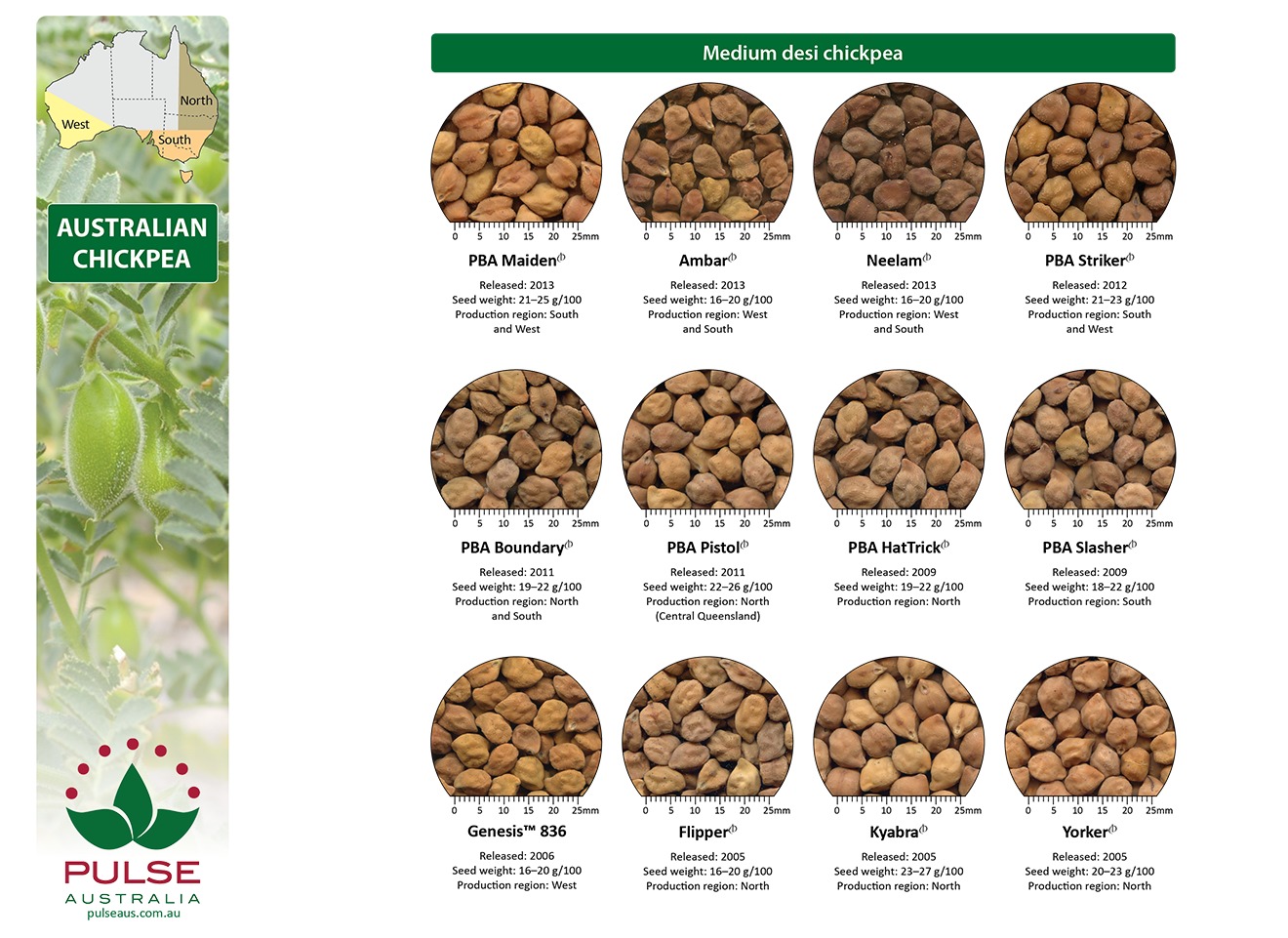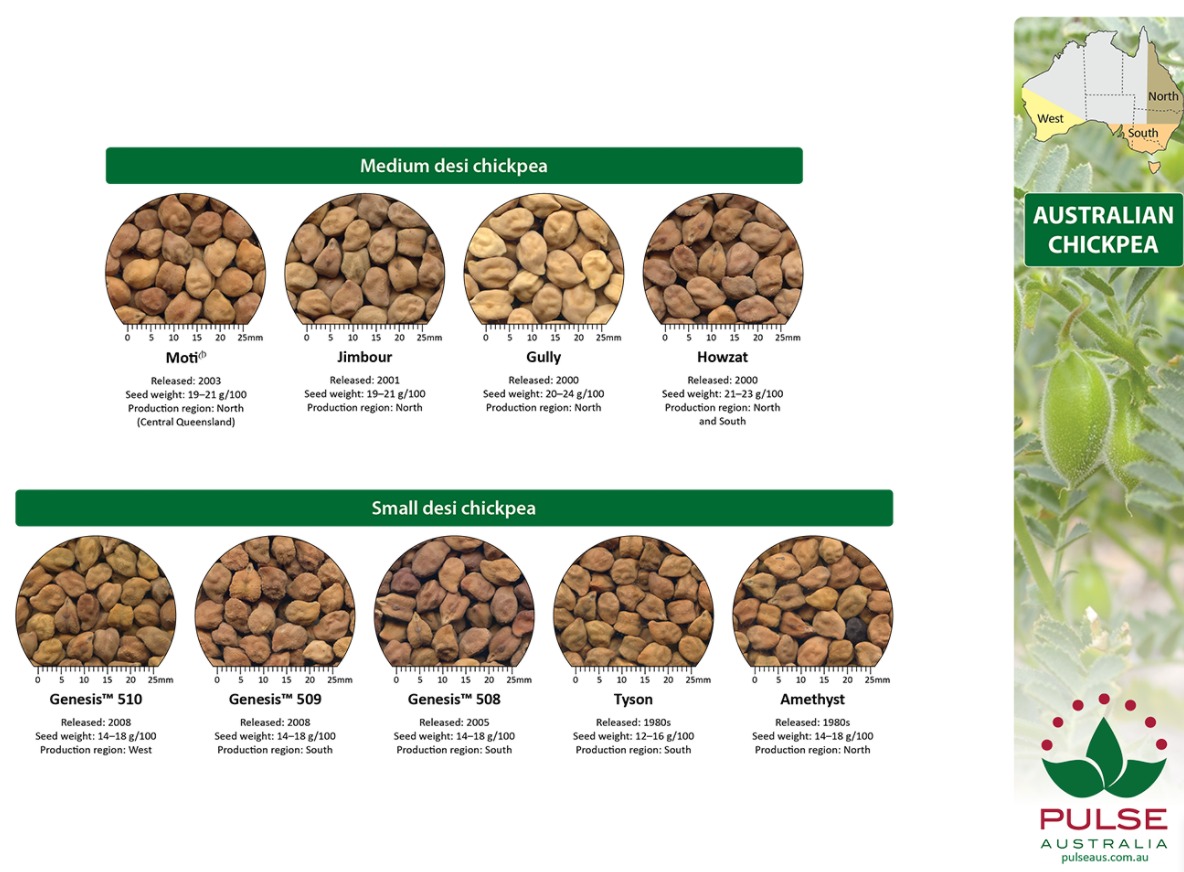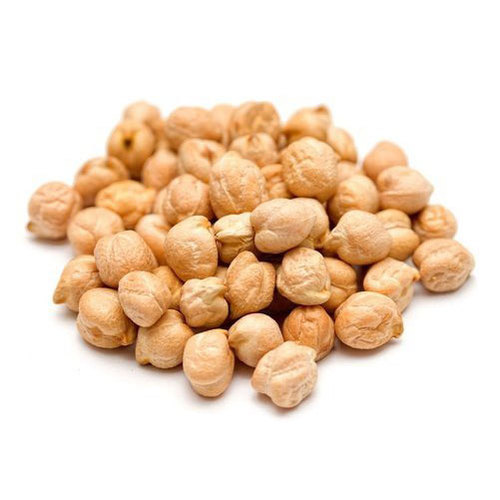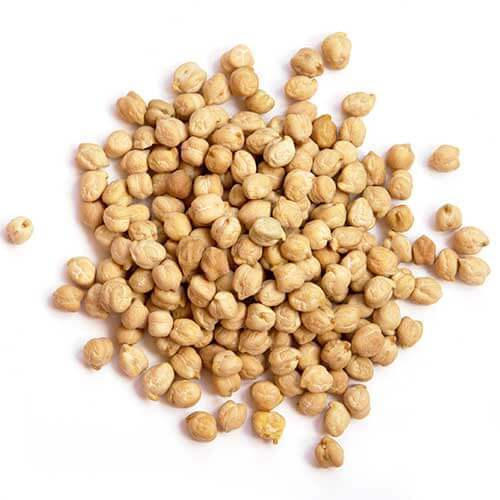Our Products
Chickpeas
There are two groups of Chickpea – Desi and Kabuli, mainly distinguished by seed size, shape and colour. They also have different growth requirements.
Kabuli Chickpea
Kabuli, sometimes called garbanzos, have larger, rounder seeds than desi types. Each seed weighs about 400 mg. They are white to cream in colour and are almost exclusively used whole. Buyers in the Mediterranean region prefer kabuli type chickpea. Within the kabuli types several market categories have emerged for Australian growers including the traditional large seeded kabuli markets, where large seed size (9 mm and above) is important to attract premium prices, a small seeded (7–8 mm) class than can be sold into bulk kabuli markets or graded to size to grade out the 8 mm class and a very small seeded class (less than 7 mm) than is sold into bulk kabuli markets.
Deshi Chickpea
Desi types have small angular seeds, each weighing about 120 mg, that are wrinkled at the beak and the different varieties range in colour including brown, light brown, fawn, yellow, orange, black or green seed. The grain is normally dehulled and split to obtain dhal and then may be further processed to produce flour (besan).
Buyers in India and the sub-continent favour desi chickpea over kabuli.There is an increasing use of large, whole seeded desi types in a range of food preparations in Bangladesh. A small premium has been paid for desi types (e.g. Kyabra) fitting this use.Desi chickpeas have traditionally made up about 90% to 95% of Australian production
Wheat
Wheat is a grass widely cultivated for its seed, a cereal grain which is a worldwide staple food.The many species of wheat together make up the genus Triticum
VARITY OF DESI CHICKPEAS AS PER PULSE AUSTRALIA






